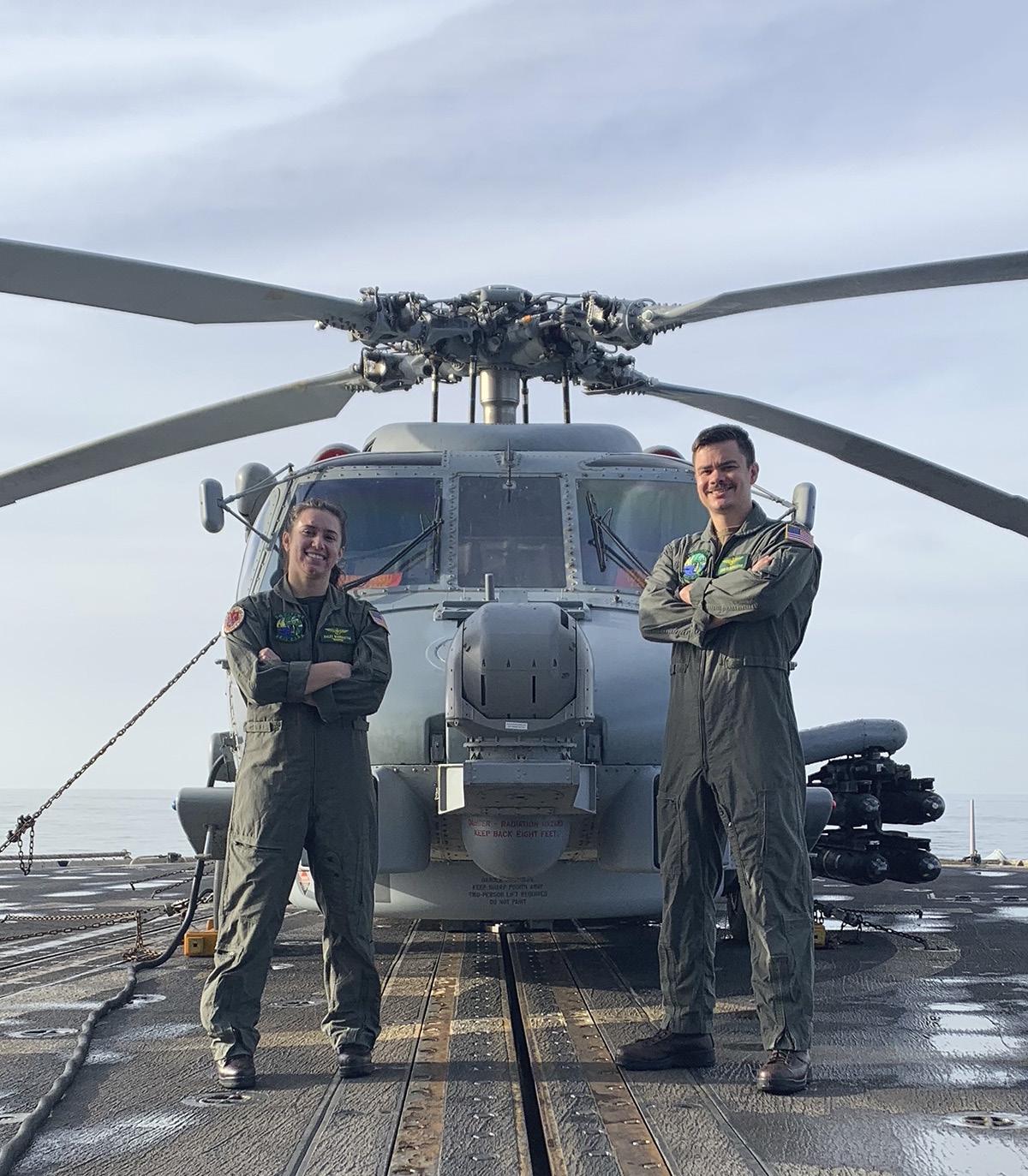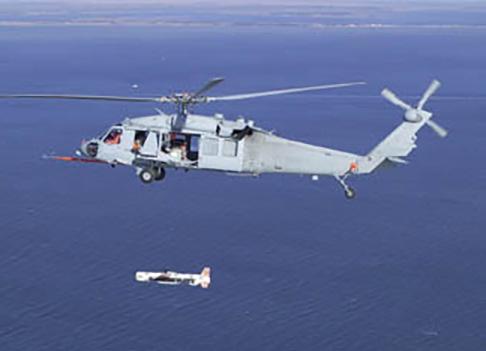Focus - UAVs and You Navy Future Vertical Lift: Pilot Optional LCDR Matt “Thumper” Petersen, USN
T
he best choice for the Navy’s next vertical lift platform is an optionally-piloted rotorcraft. Navy Future Vertical Lift is often considered a contest of competing prototypes: Two currently flying include the Sikorsky-Boeing SB>1 Defiant is a coaxial design with counter-rotating rotors and a pusher propeller for high-speed dash. The Bell V-280 is a tiltrotor design, like the proven Bell-Boeing MV-22 Osprey, 1 and it has demonstrated autonomous flight.2 In the vocabulary of engineering, sprint and agility are pitted against range and endurance. Either one could make a capable maritime rotorcraft. However, this is not the most relevant question. The choice that should define Navy Future Vertical Lift is not the means of propulsion, but the means of control: Piloted, optionallypiloted, or remote-piloted. An optionally-piloted rotorcraft is the ideal evolutionary choice. This paradigm drives tactical flexibility, developmental capability, and strategic ambiguity for the maritime gray zone. Optional piloting builds flexibility across tasks and tactical situations. Complex missions requiring humans in the aircraft, such as search-and-rescue, personnel recovery, or logistics flights in congested airspace may be operated by onboard aircrew. Longer-duration or higher-risk missions such as intelligence, surveillance, reconnaissance and targeting (ISRT), counter-ISRT, or surface warfare may be conducted with remote pilots. Optionally-piloted aircraft may operate at high altitude, expanding sensor horizon, without the added weight and complexity of life support systems. The Navy may consider the Army’s “CapSet 2” model for Future Vertical Lift, 3 and the Army is already exploring the optionally-piloted concept. 4 This capability could deploy on board Arleigh Burke Flight IIA and Flight III guided-missile destroyers and future surface combatants. It would bring the full spectrum of piloted and remotely-piloted aviation options to the surface action group, and to areas beyond the range of the carrier airwing. Incremental Evolution Optionally-piloted aircraft represent an intermediate form between the onboard human pilot and a fully remote or autonomous vehicle. Incremental evolution is a wise choice, with sound historical backing. Sailing ships were not struck wholesale upon the advent of coal-fired propulsion. Rather, intermediate forms prevailed for decades: coal-powered ships with masts and rigging 5, sailing and building confidence in steam power. The shift to remotely-piloted and autonomous flight is a similar evolutionary moment, and the optionallypiloted aircraft is a similar intermediate form.
Rotor Review #153 Summer '21
As the competing prototypes are fly-by-wire aircraft, implementing optional piloting is a software problem. No physical modification is needed, and technical maturity is not required on the day of the program’s initial operational capability. This built-in flexibility has already been leveraged for the Magic Carpet control augmentation project in the F/A18. Decades after its initial fielding, upgrades implemented in the aircraft’s digital controls have improved carrier landing performance. They have set the stage for substantial efficiencies in carrier qualification. Along these lines, a 2020 proof-ofconcept demonstrated an E/A-18 Growler crew remotely controlling two additional E/A-18s in flight. 6 As the optionally-piloted capability hits the Fleet, evolutionary flexibility becomes part of the package. Operational units will learn to employ identical piloted and remotely-piloted airframes side-by-side. They will build bases of tactical and technical knowledge, without the friction of operating multiple aircraft types. Squadrons will learn by doing. Innovation along these lines is underway in the U.S. Air Force “Skyborg” and Australian “Loyal Wingman” manned/unmanned teaming paradigms. 7 Most recently, an unmanned MQ-9B employed sonar buoys and tracked an underwater target, demonstrating potential as a playmate for a crewed anti-submarine aircraft 8. Ambiguity: Do Drones Escalate? Optionally-piloted aircraft provide the operational commander a new dial to tune the level of intended escalation. If drones are less provocative than crewed aircraft, it follows that a given mission flown by a drone may be less threatening than the same mission flown by a pilot. Expanding this line of thought to enemy action, one finds the shootdown of a drone less escalatory than that of a human pilot. Erik Lin-Greenberg published experimental research suggesting this possibility in January 2019. 9 It was demonstrated in action six months later, when Iran shot down an American RQ-4A Global Hawk, and the United States did not kinetically escalate the confrontation. 10 Optional piloting provides commanders with options to generate ambiguity. What if an adversary cannot determine whether an aircraft is crewed or not? How shall they react? What rules of engagement apply? Optionally-piloted aircraft inject confusion into adversary decision-making. China has employed these tactics of ambiguity, such as maritime militia acting in the “gray zone” space between peace and war .11 The U.S. Navy may leverage the manned/unmanned teaming concept,12 enabled by optionally-piloted rotorcraft, to aggressively compete in the gray zone.
36









































